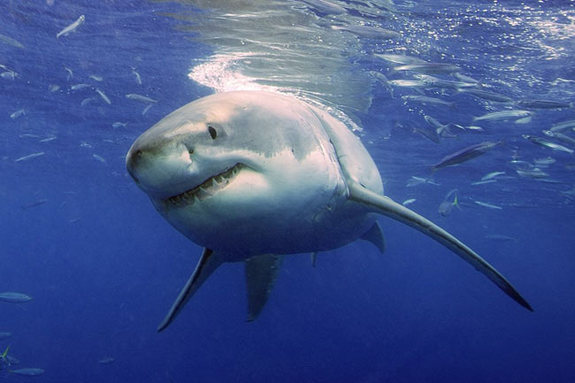Animal Sex: How Great White Sharks Do It

After "Jaws" hit theaters in 1975, great white sharks became one of the most recognizable shark species around the world. But despite the intense public and scientific attention the predatory fish has gained these past few decades, there's still a lot we don't know about great white sharks, especially when it comes to their mating behavior.
Great white sharks(Carcharodon carcharias) are the largest predatory fish in the sea and can be found in the coastal waters of all major oceans. In the northeastern Pacific, the sharks appear to have specific breeding grounds, such as Guadalupe Island off the coast of Mexico, but it's unknown if other white shark populations use this mating strategy, said Michael Domeier of the Marine Conservation Science Institute.
Scientists also don't know how great whites get down to business — in fact, their mating behavior has never been witnessed, as is the case with most other shark species. "Observing white shark mating is even more difficult than other species, because white sharks are quite rare, it's dangerous to be in the water with them outside of a cage, and they are often in places where the water is cold and murky," Domeier told LiveScience.
Research has shown that the species reaches sexual maturity at age 15, and that males have a modified pelvic fin called a clasper to impregnate females (internally). Based on observations of other shark species, researchers believe male white sharks must first bite their mates near their heads or pectoral fins, giving them enough leverage to insert their claspers.
Impregnated females then migrate for two years, a behavior that's likely linked to their 18-month gestation period. After giving birth to live young, which spend the first years of their lives in coastal waters, females return to their breeding grounds to mate again. Males, it seems, return every other year to their breeding grounds off Guadalupe Island.
Follow LiveScience @livescience, Facebook & Google+.
Get the world’s most fascinating discoveries delivered straight to your inbox.

